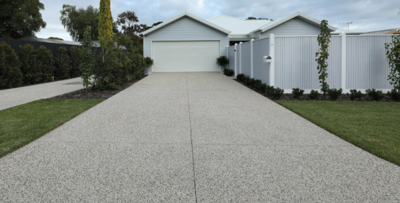
If your driveway is looking past its best, you’re probably considering your options for renovation. But installing a brand-new driveway comes at an eye-watering cost, and in many cases, it’s not necessary to start again from scratch.
The more budget-friendly option, which involves less work and less time to deal with an unusable drive, is to restore your existing driveway back to a like-new condition. Here, we’re outlining the approach that works best for most drives.
Assess the Current Condition of the Driveway
Start by assessing your driveway to see what you’re dealing with. There are a couple of reasons to do this:
To identify the surface material (concrete, asphalt, pavers, resin-bound, and so on), since your approach may vary depending on this information
To determine the level of damage to your driveway and how much repair work will be required.
During your inspection, look out for cracks, oil stains, weeds, moss, algae, and uneven areas, and determine if you’ll be able to treat the surface with cleaning alone or if repairs are also needed.
Prepare the Area
Once you know exactly what’s needed for your driveway, it’s time to prep it for the task at hand. That means moving your cars, sweeping away any leaves and debris, and relocating furniture and plants for the time being.
If you spot any oil stains, now is a good time to pre-treat them with a degreaser or specialist cleaner.
Use Power Washing to Remove Built-Up Dirt and Stains
Now the work can begin, and a good place to start is with power washing. This can make a huge difference to the appearance of a driveway (search before and after images if you want to see possible results).
It’s smart to hire an expert to do this for you, like the team at Compass Refresh. They’ll use the best equipment and make sure they’re using the correct pressure setting for the surface type. The last thing you want is to attempt this yourself and end up making the surface even worse by damaging it irreversibly.
Repair Cracks and Fill Holes
When your driveway has been pressure-washed, you’ll be able to see any cracks or holes more clearly. If there’s only a bit of repair work needed and you’re up for a bit of DIY, this is something you can do yourself.
If you’re repairing an asphalt drive, you’ll want to use cold-pour filler or patching compound for your repairs. For a concrete driveway, just clean out the cracks and apply a crack filler or resurfacer. Finish off by sealing your repairs to prevent water ingress.
Maintenance Tips for Your Restored Driveway
Now you’ve restored your driveway back to like-new condition, you obviously want to maintain your results for as long as possible.
The good news is that you don’t need to put your back out with difficult maintenance tasks. Just sweep your driveway regularly to prevent dirt from building up, and be quick to address any new stains. You might also consider committing to an annual or biannual light power washing service to prevent your driveway from degrading back to its pre-restoration state.


(0) comments
We welcome your comments
Log In
Post a comment as Guest
Keep it Clean. Please avoid obscene, vulgar, lewd, racist or sexually-oriented language.
PLEASE TURN OFF YOUR CAPS LOCK.
Don't Threaten. Threats of harming another person will not be tolerated.
Be Truthful. Don't knowingly lie about anyone or anything.
Be Nice. No racism, sexism or any sort of -ism that is degrading to another person.
Be Proactive. Use the 'Report' link on each comment to let us know of abusive posts.
Share with Us. We'd love to hear eyewitness accounts, the history behind an article.